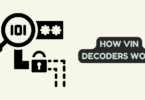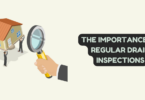
Revenue
Businesses don’t always perform an excellent job in generating revenue as much as they do in selling their offerings. Penalties, billing mistakes, and unearned discounts can take away revenue from sales. And if the problem persists over a multitude of stock-keeping units, consumers, and transactions, the losses will quickly add up.
This is called revenue leakage, and it’s more common than you might think. In fact, surveys show that over forty percent of business leaders consider it to be a systematic concern for their organizations. In this post, we’ll discuss what this financial problem is and how to combat it.
Revenue leakage—what is it?
As its name implies, revenue leakage is income that a company earns but fails to collect, often because of the inadequate awareness of the organization. More often than not, it results from manual and faulty accounting and finance processes, such as poor invoicing systems, underbilled or unbilled services, spreadsheet reliance, and pricing errors.
However, other types of revenue leakage can be industry-specific. For example, most software suppliers today use software monetization solutions because it allows them to maximize profits from their products and remain competitive. Those that don’t miss out on opportunities to earn from the software they develop, resulting in revenue losses.
How to stop revenue leakage
The reversal and prevention of revenue leakage must always be a key priority and an integral component of an organization’s operational excellence. Businesses that already possess critical qualities of self-analysis and discipline, and incorporate the right technologies, can begin collecting revenue that may have been previously unrealized. Here are some ideas that may be helpful.
- Identify the problem. Having an accurate diagnosis of the problem should be the first thing companies must do to keep revenue leakages at bay. By looking into the revenue-generating areas of the business and getting a better sense of where leaks are occurring, you’ll be able to formulate strategies that will help you avoid this issue.
- Address workflow issues. Despite how complicated they might be, most workflow problems can be resolved. Whether it’s the excessive discounting caused by a specific organizational structure or mixing up price sheets, there’s almost always a fix available. For example, if evidence is found that service representatives aren’t billing everything they should at consumer sites, companies can utilize average-time-per-service estimates to locate any potential instances regarding services that are unbilled or underbilled. It may sound like a minor change, but this small increase in scrutiny can make a difference.
- Leverage technology. There’s no denying that technology addresses many problems that can potentially cause revenue leaks. Fortunately, excellent software solutions are available to help automate or assist practically any manual process in creating better consumer experiences, building profitable and flexible business models, improving overall efficiency, and mitigating human error.
Conclusion
Companies of any size and industry can all be impacted by revenue leakage, being especially common in situations involving complex data and contract terms that aren’t monitored well and ongoing consumer relationships. Fortunately, with the right amount of planning, preparation, and technology utilization, you can overcome this problem and capture the revenue opportunities that will help your business grow.





